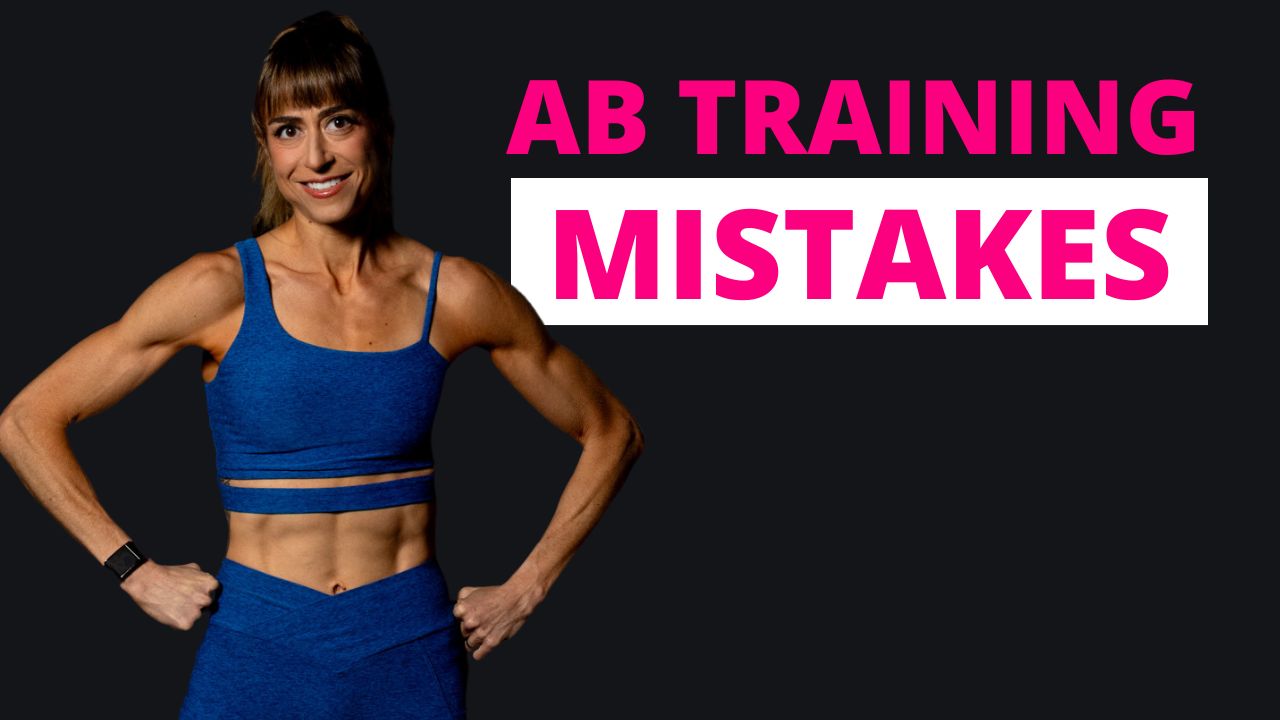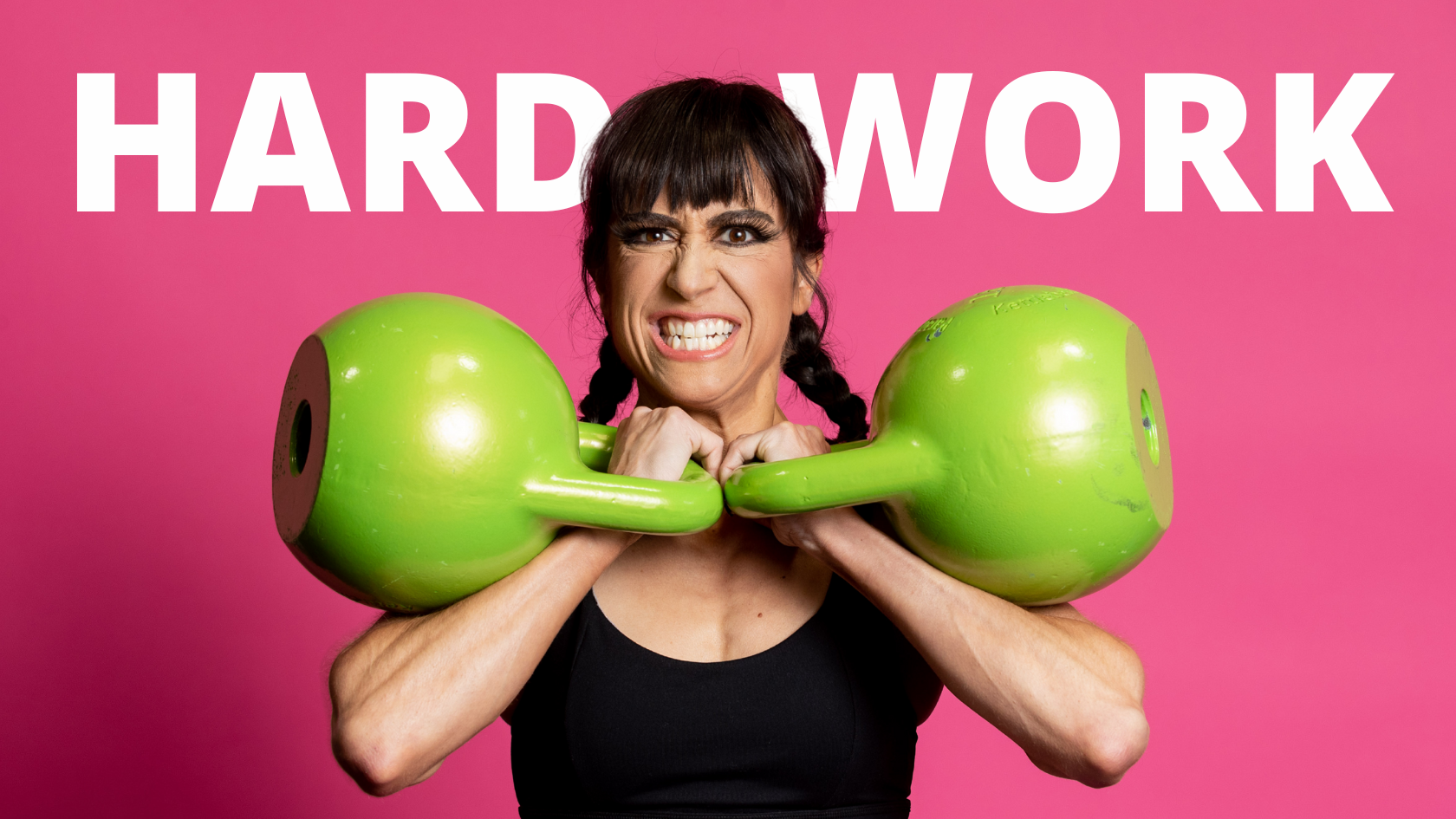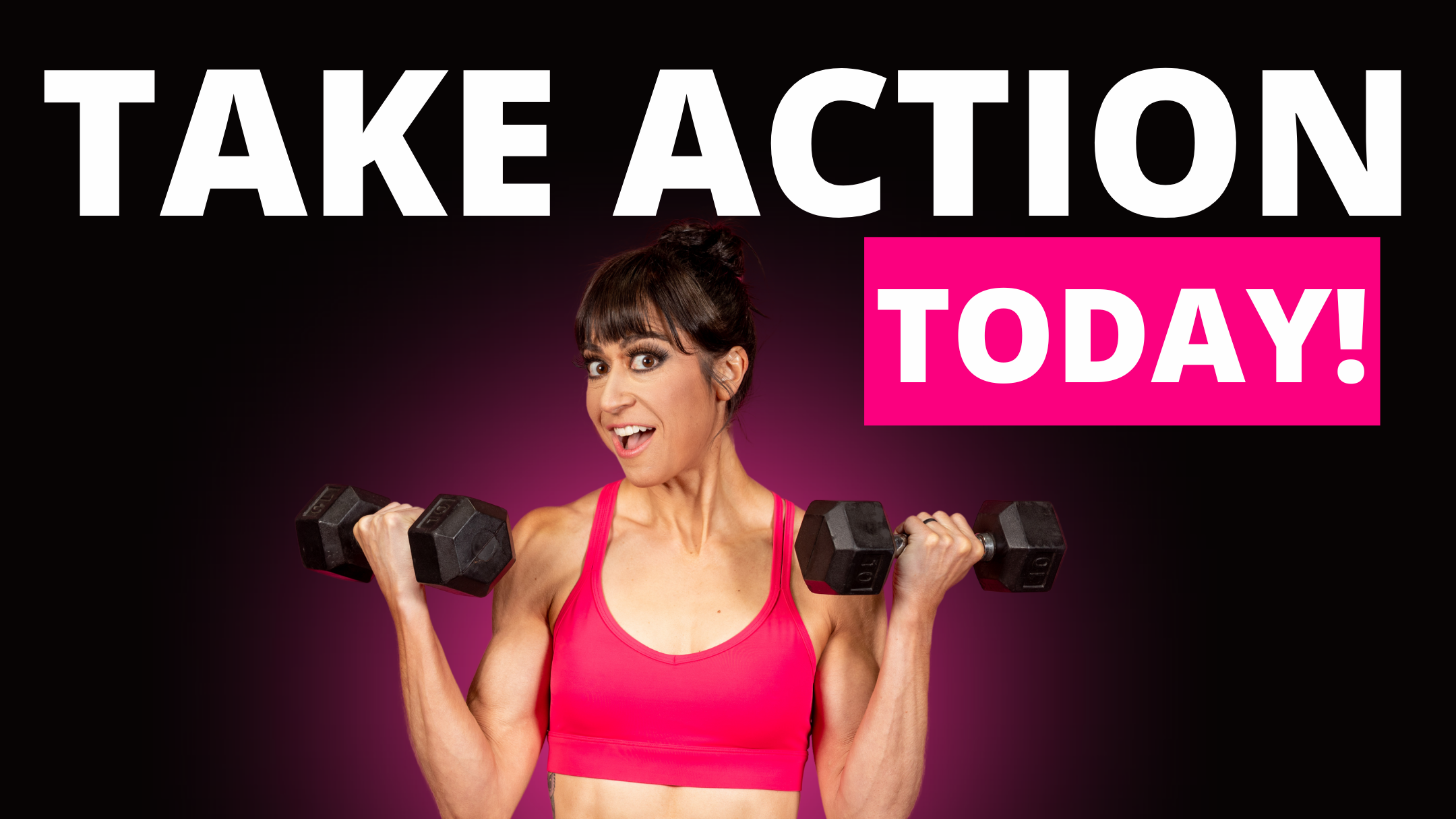
How To Become The Best Version Of Yourself
Change Requires CHANGE
If you’re feeling stuck and know deep down that you could be doing better, don’t wait any longer. Your life is not going to change until you take action and make a bold move towards your goals. If you’re ready to take control of your life and start moving towards the results you want let us help you achieve your goals. ⬇️
Change Requires CHANGE
If you’re feeling stuck and know deep down that you could be doing better, don’t wait any longer. Your life is not going to change until you take action and make a bold move towards your goals. If you’re ready to take control of your life and start moving towards the results you want let us help you achieve your goals. ⬇️
Transcript:
Open Transcript:
Cori (00:00):
Welcome to the Redefining Strength Podcast. Everything you need to succeed on your health and fitness journey, even the stuff you don’t want to hear. Act as if I want to talk about four ways to help you become the person that you want to be. And I say, act as if and really differentiate this from fake it till you make it because there is a big mindset shift that happens when you think I am acting as if I am the person I want to be versus I am faking the habits. Just that word fake means that you’re not embracing them, that you don’t believe in them. And I realized the big difference between these attitudes when I was first starting redefining strength. I’ve actually noticed it multiple times throughout my life when I went to college and I was told I wouldn’t play because I was the lowest recruit.
(00:44):
And I decided I was going to act as if I was the top recruit that year and going to play, and I ended up playing. But I also saw it when I first started redefining strength. And I was telling myself, I’m not that person in front of the camera, which you might not believe now. I’m not that person to take the photos. I’m not that person to do X, y, and Z thing. And ultimately it was a big push from Ryan, my butthead and my partner in crime, my now husband who at the time I was dating, and he said, if you’re going to do this, you need to step in front of the camera. You need to embrace all these different things. And I thought to myself, that’s not who I am. I’m the nerdy kid at the back of the class. And then I realized I hadn’t been that person for a while.
(01:20):
That going to college, I decided I was going to be more outgoing, that I wanted to change the way I interacted with people, my social setting, my social appearance. So I started shifting my identity at that point, and I had embraced acting as if it wasn’t faking anything, it was just saying, Hey, this is the person I want to be. What traits, what actions does this person take? And so with starting redefining strength, I realized, okay, I have to step in front of the camera. I have to get comfortable doing these things. And it’s not easy to start, but I realized I was acting as if I was the person that I wanted to be. And at some point it becomes just who you are. And I wanted to give you some tips and perspectives to help you also embrace that mindset shift. Because change requires change.
(01:58):
And if we’re constantly fighting back against the changes, we’re never going to see the new result that we want. And in acting as if we are choosing to really create the new habits, embrace the new habits that align with the identity of the person that has the goals we want. Because when we are trying to reach a goal, it’s not just losing the weight, it is becoming the person that has the lifestyle that maintains that weight loss even long-term. So tip number one, embrace the discomfort and show up anyway. A lot of times when we are acting as if it does not feel natural, it does not feel normal, but we have to start shaping even our mindsets because that’s the thing. We a lot of times put actions on ourselves, put tasks we should do on ourselves, put habits we should do, but they aren’t aligned with what we’re actually thinking.
(02:42):
And that’s where the disconnect happens, where we don’t embrace those things, we go on another diet plan versus adjusting our lifestyle. So as you start to think who is this person that has the life, has the goals that I want, and how can I act as if you need to recognize that it’s going to be very uncomfortable times or discomfort as I like to say, because it makes you sort of smile and embrace it a little bit more. And again, mindset is key, but we want to think about how can we show up as that person every single day? How can we take those actions? How can we not mentally rebel against the changes that we really need to make? And I think it’s key that we recognize that a lot of times when we say I can’t, it’s not actually that we can’t. It’s really us saying to ourselves, I’m not comfortable being uncomfortable in that way.
(03:28):
And that’s where we have to push back. We have to challenge ourselves to be like, well, why am I not comfortable being uncomfortable in this way? Why do I believe I can’t? Where am I feeling the pushback from the hard so that I’m not wanting to embrace this habit? Not wanting to embrace this mindset. And a lot of times we’ll say, well, nothing’s ever worked before or this hasn’t worked before. And we’re dooming ourselves with doubt because we don’t truly know what’s possible and where we are right in this moment isn’t where we once tried this habit even before. And that shift in lifestyle, in mindsets, in beliefs, in anything in our environment can really make something that even didn’t work before work now or the way we approach that habit change can be different now because of other factors. So we want to think about even though the action is awkward, how can we embrace one small change and be comfortable with that small change?
(04:18):
How can we push into the hard just a little bit more? Because growth really does mean taking action before we’re ready. Then tip number two, set identity driven habit goals. So when we’re thinking about it, we want to think about, okay, what’s in line with the ultimate identity that I need that I would like to call destination be set. It is our dream identity, so to speak. Now looking at the reality of who you are, you might be like, oh goodness, that’s actually quite a far journey to the identity I want to embrace. And I don’t think I can get there in one step, but what’s one step you can take today to move forward on that path? Because often we just see the end destination and think, I’m so far from that. How do I get there that we don’t see the one clear action we can take right in front of us?
(05:06):
So as you’re setting identity driven habit goals, don’t only think about where you want to go, think about that identity enough to have that outlined, but then take it back to where am I currently? What does my current lifestyle look like? Because the more we meet ourselves where we’re at to take that one step forward, the more likely we are to ultimately get there. Habits can be broken down into so many different ways and we can build upon them. If you have to eat 130 grams of protein in one day and right now you’re eating 90, maybe it’s not realistic to just go revamp all your meals because you’ll feel miserable. You’ll reject the habit so to speak, because you have to do such a big increase. Maybe you’re like, okay, I’m eating 90 grams right now. How can I eat 95? How can I eat a hundred?
(05:44):
How can I make one small shift that is towards the identity that I want to build? And that’s really where the magic happens. And this can feel weird, and I can tell you I always believed I wasn’t a goal setter. I resisted New Year’s resolutions. I’m like, oh, I don’t like setting goals. And I realized it was because they weren’t driven by action. A lot of times they were just wishes and dreams. But when you’re outlining that identity and you’re understanding the habits it takes to be in that goal identity that you have, you’re giving yourself action items and then you can list those out and break those down to really help yourself move forward. But it is about giving yourself even those micro goals so that you can see the little habits adding up. It is about really anchoring yourself in where you are now with that clear vision of what that lifestyle really looks like.
(06:29):
And remember that all of these habits that you’re taking on a daily basis, our votes for who you want to become, they’re all what truly creates the goal, even though you can’t see it snowballing right away, but the little actions and if we can celebrate those wins, they reinforce the identity we’re building. Then tip number three, create minimums so you always move forward. I am big on doing the minimum, and don’t get me wrong, I like to see results as fast as possible and complain with the best of them about how results aren’t happening fast enough, even when I know the reality of results in achieving body recomp and achieving different fitness goals. But we have to remember that the minimums are what ultimately move us forward. It’s not doing a perfect plan at the perfect time. We all do that. We all get really good at dieting down because in January we get motivated and we do these six week shreds and 21 day fixes, but ultimately we only are good at dieting down and we never learn to maintain because life shifts, we don’t have that perfect time anymore.
(07:29):
We can’t just be on this perfect plan. Life happens and we don’t know what to do. And that’s where minimums really come into play. It’s about making our lows less low because the more you can do at the worst of worst times, the more you’re going to be able to do at perfect times. And if you can make your lows less low, trust me, your highs are going to get higher. So really consider the minimums that you can do. Minimums are what make us disciplined and disciplined is what creates that identity because we’re replicating those habits without thought. So as you’re going through thinking about the changes you have to make, if you’re starting to feel that the effort doesn’t feel worth the outcome, think where am I maybe doing a little bit too much right now that is pushing you back against other priorities in my life or other things that I value, or even just the time that I have and the schedule that I have, which time comes out of what our priorities are?
(08:16):
Because our priorities, if we don’t own them, become our excuses, but consider what the pushback is against. Is it against you cutting out a non-negotiable? So how can you do the minimum? How can you do a little bit more than what you’re doing right now to move forward? How can you even scale back a habit that’s feeling a little bit too hard to stick with something that’s still an improvement? Because in those improvements, not only are we changing our habits ultimately to take steps forward towards that person we want to become, we’re acting as if, but we’re shifting mindsets because we don’t recognize that the more you do, the more you do. And that success mindset builds through what we accomplish. And when we feel like we’re not being successful with something, we doubt the habits even more. Our mindset becomes a negative one, which makes us shift into not taking the actions we need and defaulting back into the comfortable.
(08:58):
So remember that these minimums aren’t just about the habits that you’re building that are transforming you and are pushing you on that journey to the identity you want to become. They are you acting as if, but they’re also creating that success mindset and that mindset helps you more embrace that new identity, helps you truly believe that you’re acting as if, and again, not just faking it till you make it. Then tip number four, take full ownership whether you want to recognize it or not. Ultimately, you are in control of who you become. Yes, life throws things at us and we can’t always control every event that comes our way, every situation we find ourselves in, but we can always control our perspective. We can always choose to see it as obstacle or opportunity. We can choose to learn from it or we can choose to give up.
(09:40):
We can ultimately always choose how things impact us and how we respond. And again, in acting as if when you’re hit with something hard, when you’re hit with something unexpected, think about that identity that you’re building. How would that person act in that situation? When you find yourself defaulting back into your natural response, your comfortable response, the response you’ve always done, the routine you’ve always repeated, pause, assess, take ownership of this opportunity to make a change and will it be easy? Oh no. It goes back to tip number one. You’ve got to embrace the discomfort, but you’ve got to really see it as that opportunity and vote big vote for who you want to become because those hard points, the points where it would be so easy to default back into what is natural to self-sabotage when we’ve always self-sabotaged to go to the cupboard and grab out cookies or chips when we’re stressed because that’s what we’ve always done at those points.
(10:30):
That’s where we can take that big leap forward into our new identity by pausing and really pushing into the hard. But it means taking ownership versus blaming things outside yourself. Well, it was a stressful day at work. Well, this came up well, this is just the pattern I’ve always done. This is who I am. No, this is who you were. But take ownership. Take time to recognize that you have this opportunity to act as if and shift those mindsets because we are what we believe, whether we want to recognize it or not. And we don’t often realize the tapes sort of playing in our head, but it’s playing. And the more we can pause and build that self-awareness, the better off we’re going to be. But reflect on the failures, reflect on the learning experience, reflect on the good things that happen. Too often we’re like, yay, I did it, and then we just move forward versus being like, how did I do this?
(11:15):
How can I repeat more of this? How can I embrace whatever happened here? The magic to use more of this in other areas, but take ownership and really use that reflection to learn a lot about yourself, both good and bad situations. So with all of this and acting as if, I want you to really take a step back because I think in making some of these changes, we think, oh, well, I’m bad at this. I’m bad at tracking. I’m bad at being consistent with my workouts. I’m bad at this. No, you are not bad. You just haven’t practiced it yet enough. And in acting as if we are practicing consistently and we’re going to still make mistakes, but we’re practicing to learn to get it right, then we can’t get it wrong and then until it is who we really are, it’s a big part of our being.
(11:58):
But remember, you have to practice to get better at something, and that means embracing that you are going to make mistakes that you are going to have to learn. And there is no right time to start. The right time to start was probably yesterday. The next best time is right now because the more you, again, learn to do the minimum at times that don’t feel ideal, the more you’re going to be able to feel strength and confidence in what you can overcome, but also move forward when times are really good and capitalize on those perfect periods to do a little bit more to see results a little bit faster. So I want to encourage you act as if outline what that identity you have to embrace to have the goals you want to have really looks like. Then take a step back to look at where you are right now and start connecting the dots with little steps forward and little habit changes and little mindset shifts, but you’re not faking anything. You are truly embracing the habits and actions that you need to take and how your mindsets have to shift to really promote and believe in those things because that is how you’re going to act as if to become the person you want to be.
*Note: This transcript is autogenerated there may be some unintended errors.










